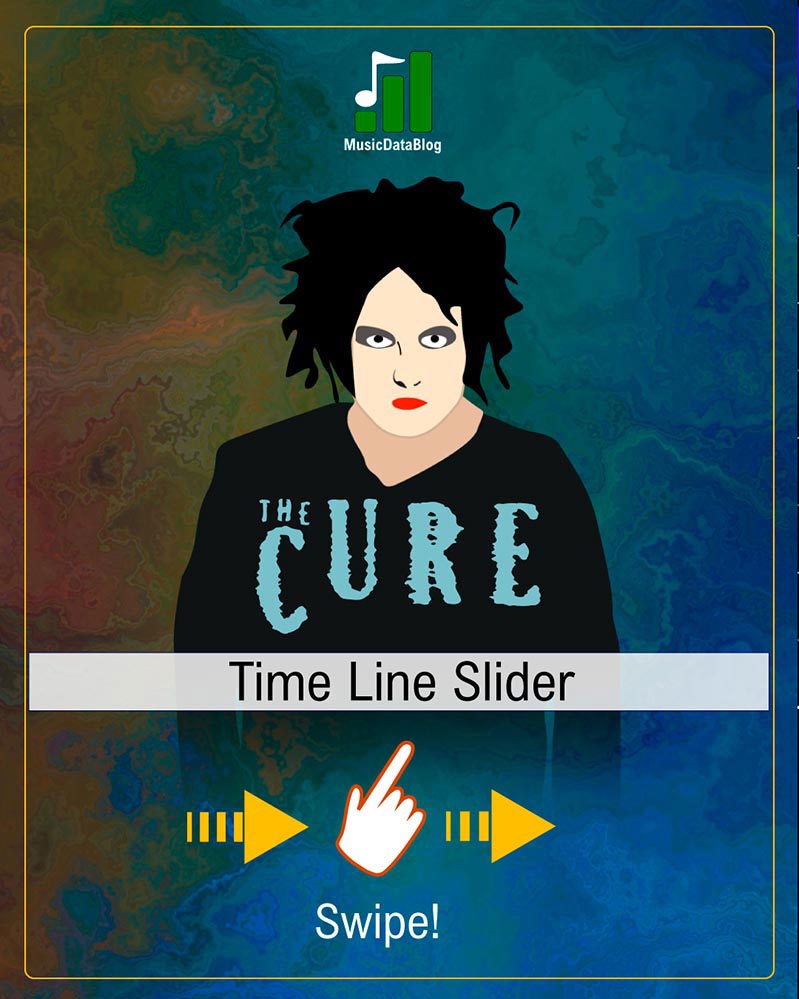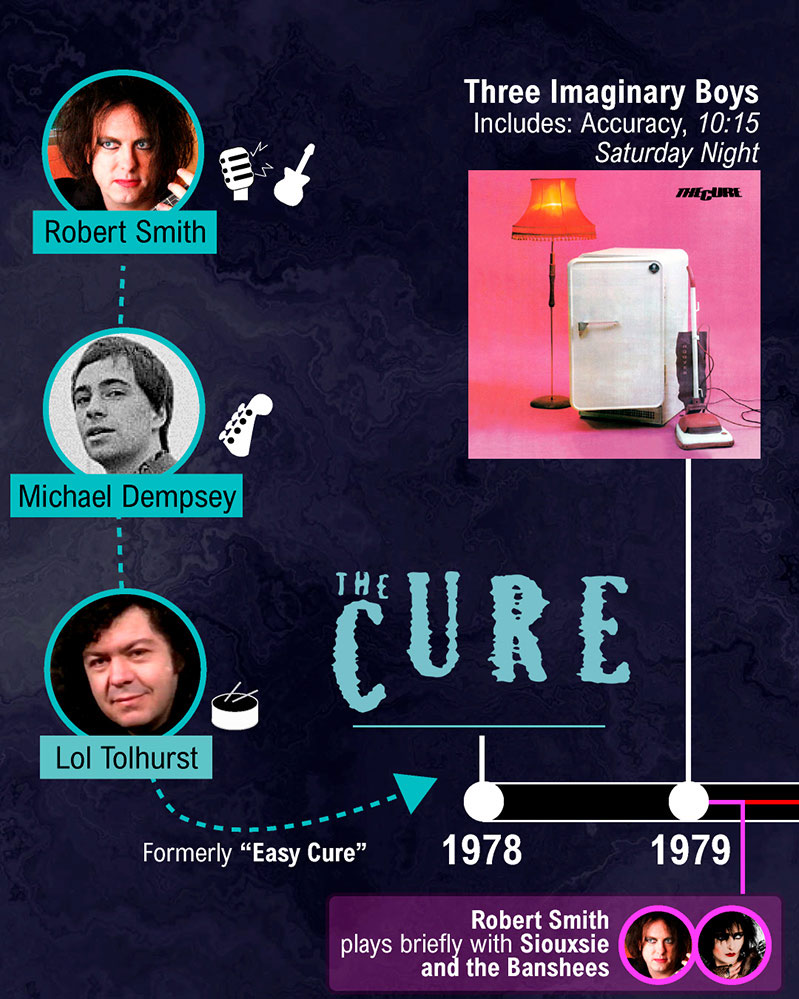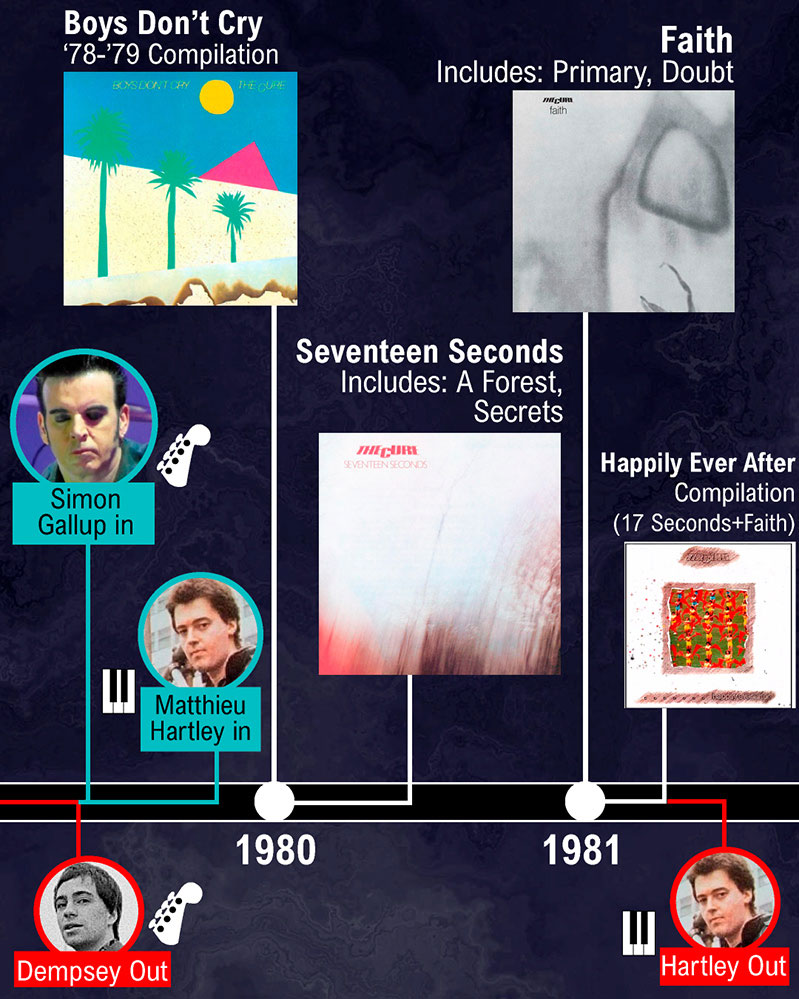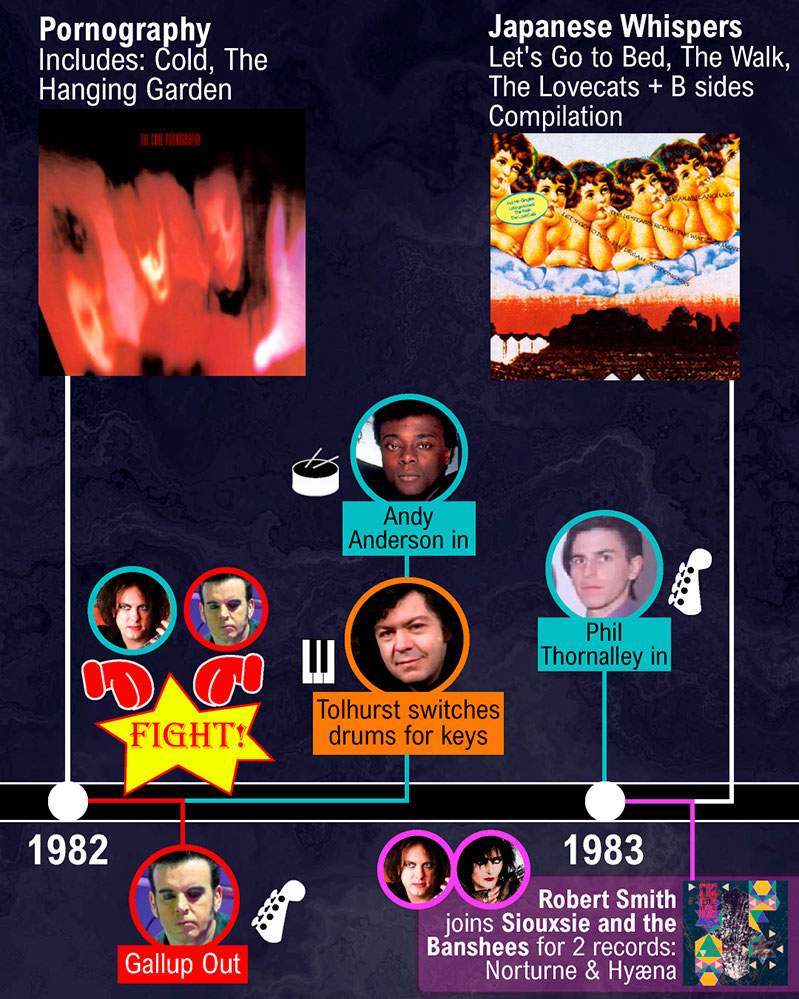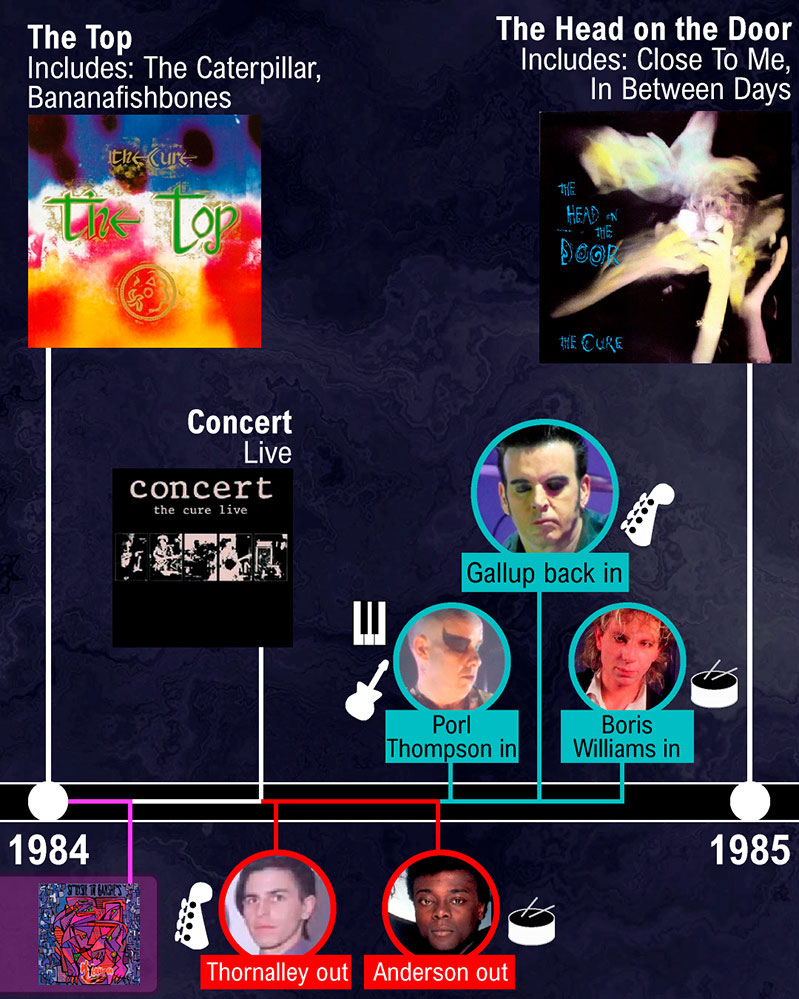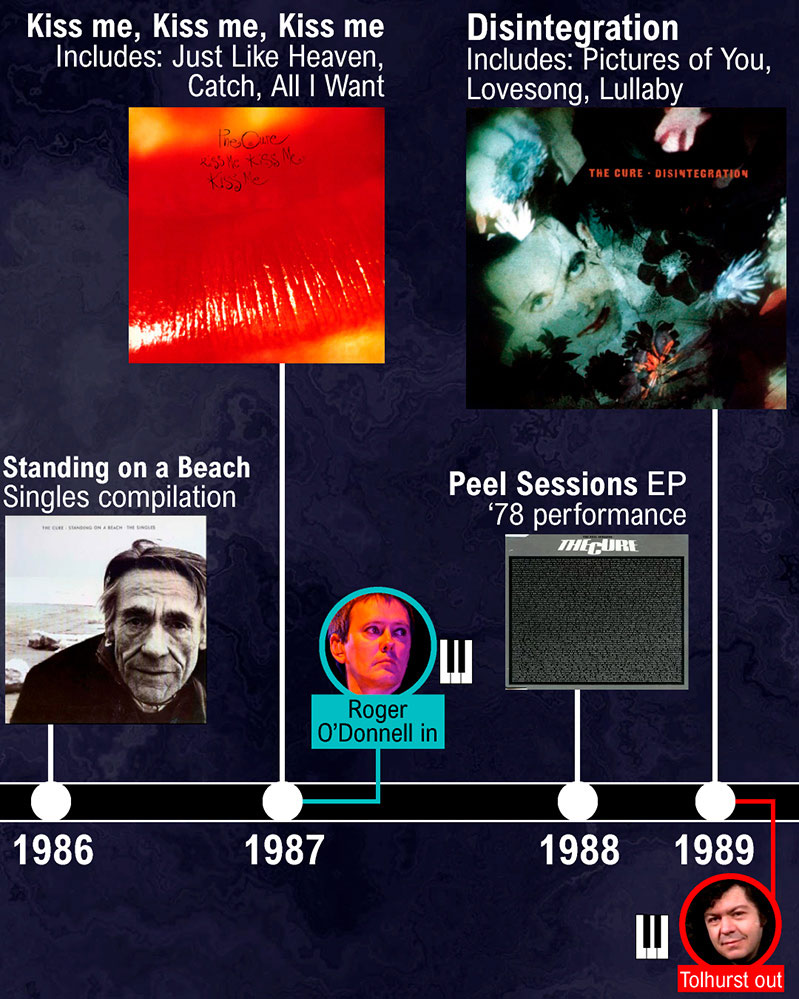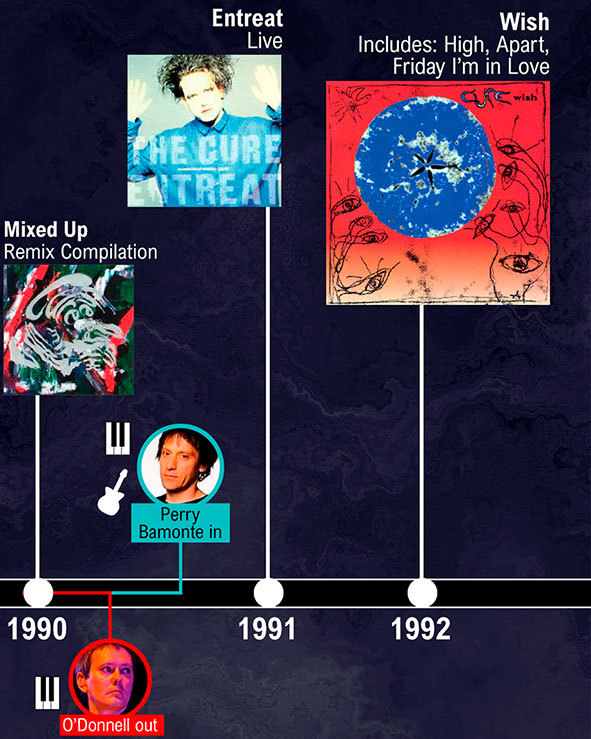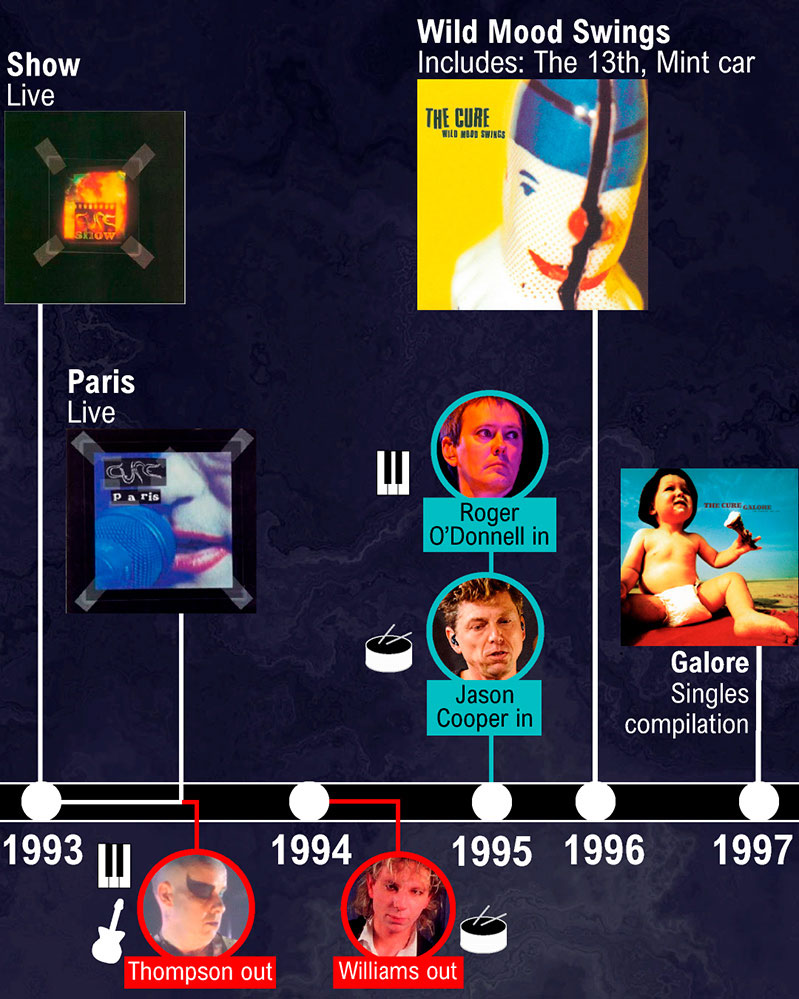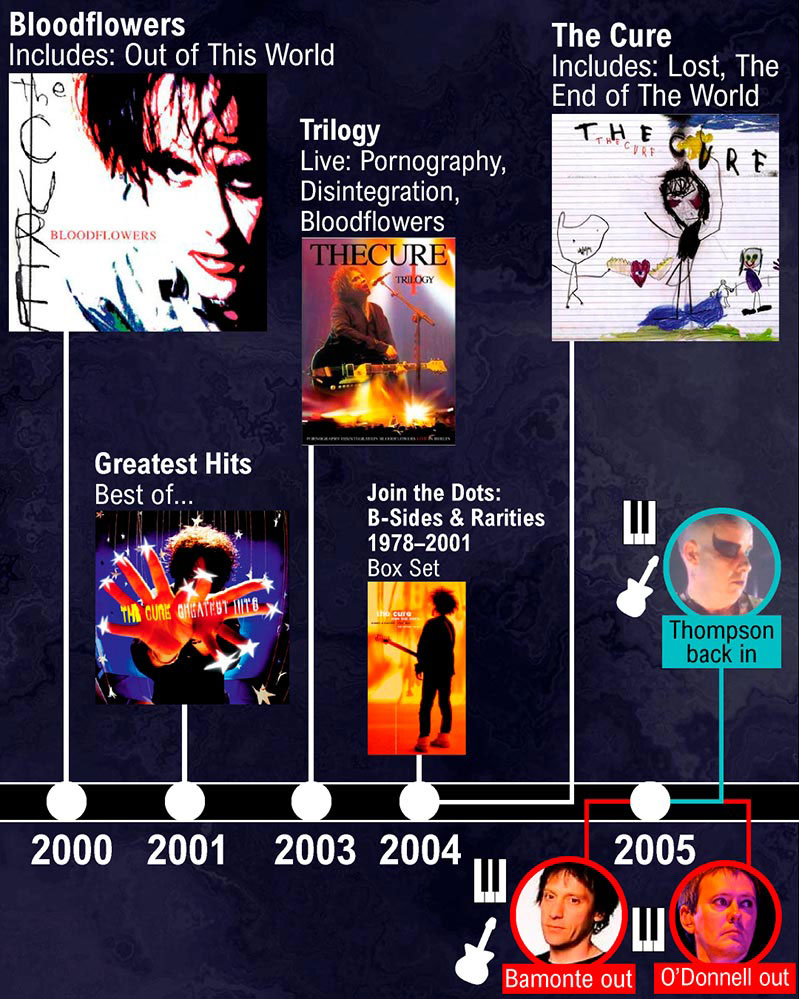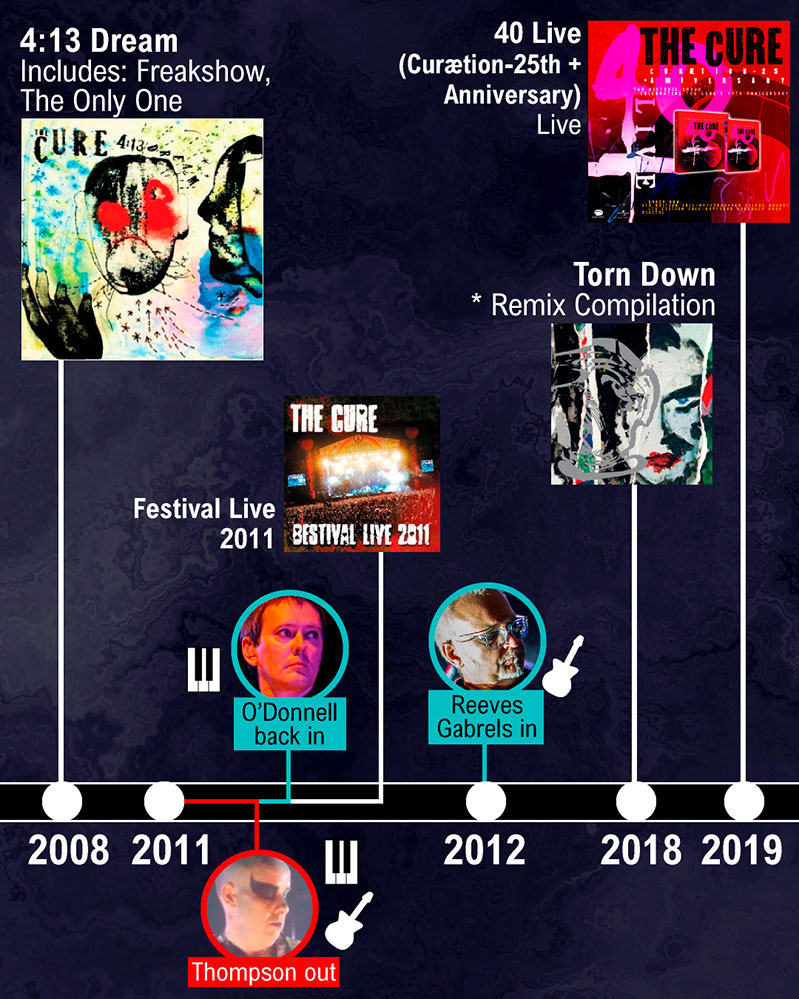This is the history of The Cure, an iconic band founded by frontman Robert Smith in Sussex, England, in 1978. Swipe below to check out the various lineup changes throughout the group’s career.
The Cure: a quick view of their history
The Beginnings of The Cure: 1978-1980
The band’s first name, around 1976, was Easy Cure. After they got a recording contract and went through some line-up changes, The Cure officially started. The initial members of the band were Robert Smith on guitar and vocals, Michael Dempsey on bass, and Lol Tolhurst on drums.
The Cure’s debut album, Three Imaginary Boys, was released in 1979: a straightforward punk record, the LP was well-received by critics. Notably, it does not include the band`s first hit single Boys Don’t Cry, which was released as a stand-alone single and later included in 1980’s compilation entitled just like the song. This compilation includes several tracks from their debut album.
Goth and dark era: 1980-1982
After Michael Dempsey left the band, at the end of 1979, The Cure welcomed two new members, turning the band into a four-piece. Such members were keyboard player Matthieu Hartley and bass player Simon Gallup, who would become one of Robert Smith’s most important collaborators.
With this new line-up, The Cure released their second album, Seventeen Seconds, in 1980. This record, alongside 1981’s Faith, meant a new direction on the band’s sound, which was more obscure and dark.
After the release of the album Faith, Hartley left the band. The then three-piece group recorded their next LP, Pornography, in 1982. It turned out to be their most successful album at that point. On the tour for Pornography, the relationship between Robert Smith and Simon Gallup was not on good terms, which in the end resulted in a fight at a bar and Gallup’s exit from The Cure.
Crisis: 1983 and 1984, Robert plays with Siouxsie and the Banshees
After Simon Gallup left The Cure, the band was reduced to a duo, with just Robert Smith and Lol Tolhurst as members. Lol switched from drums to keyboards, and the band welcomed a new drummer: Andy Anderson. Phil Thornalley temporarily filled in as a bass player.
Between 1982 and 1983 The Cure recorded a series of successful singles: Let’s Go To Bed and The Lovecats. Both were released together on the b-sides compilation Japanese Whispers, in 1983.
The Top, The Cure’s psychedelic fifth studio album, was released in 1984. It is the only album recorded by the line-up consisting of Smith, Tolhurst, Thornalley, and Anderson.
From 1983 until 1984 Robert Smith officially joined Siouxsie and the Banshees. He recorded with them the live album Nocturne and also contributed with guitar and songwriting to the band’s next studio album, Hyæna.
Robert Smith’s experience with Siouxsie Sioux’s band convinced him to transform The Cure into a band with more prominent pop elements. This change of direction was instrumental for the next albums that The Cure recorded and resulted in what many consider the band’s most notable works
The peak of popularity of The Cure: 1985 to 1989.
After leaving Siouxsie and The Banshees, Robert Smith returned to The Cure and started reconfiguring the project. Without Anderson and Thornalley, the band recruited new personnel. Bassist Simon Gallup, one of the most relevant members of The Cure, returned to the band. Also, the group turned into a five-piece with the addition of guitar player Porl Thompson and drummer Boris Williams. This is the lineup that released the most popular albums by The Cure.
The Head on the Door was released in 1985 and gave The Cure their most relevant commercial hits at the time: In Between Days and Close to Me. In 1987, Kiss Me Kiss Me Kiss Me featured the classic track Just Like Heaven. For the next year, the addition of Roger O’Donnel as a keyboard player added more to the sound palette of the band. But it was The Cure’s next album that would become their most acknowledged piece of work.
Disintegration was released in 1989 to commercial success and critical acclaim. It included his singles such as Lullaby, Pictures of You, and Lovesong. Disintegration was the peak point of The Cure, which established themselves as referents of the eighties rock and pop music.
After recording Disintegration, founding member Lol Tolhurst left the band due to problems with drugs and alcohol. With this, Robert Smith remained as the sole original member of The Cure.
The Cure in the Nineties: 1992-1998
In 1990 Roger O’Donnel left the band and was replaced by keyboard and guitar player Perry Bamonte. The line-up consisting of Smith, Gallup, Thompson, Bamonte, and Williams recorded another of The Cure’s greatest albums: Wish, released in 1992. This LP includes classics such as High and Friday I’m in Love.
In 1994 Porl Thompson and Boris Williams exited The Cure and are replaced by the returning Roger O’Donnel and a new drummer, Jason Cooper.
The next album was Wild Mood Swings, released in 1996. It was considered a commercial failure and was not well received by fans and critics alike.
By 1998 Robert Smith announced that the band would record their final album, something that was not so, as The Cure continued releasing music anyways.
The 2000’s for The Cure
Bloodflowers was released in 2000. No singles or promotional tracks were issued, but still, it was well-received by critics and fans. Robert Smith considered this album to be the final installment of a trilogy of albums: Pornography, Disintegration, and Bloodflowers. This trilogy was played live in concert for the album DVD Trilogy, released in 2003.
The Cure’s self-titled record was recorded in 2004. Generally, it is not considered a solid effort from the band. 4:13 Dream was released in 2008 to more positive reviews and is, until today, The Cure’s last album.
The Cure discography
Here we list all of The Cure’s albums in chronological order, alongside some relevant compilation albums:
- 1979: Three Imaginary Boys
- 1980: Boys Don’t Cry (comp.)
- 1980: Seventeen Seconds
- 1981: Faith
- 1982: Pornography
- 1983: Japanese Whispers (comp.)
- 1984: The Top
- 1985: The Head on The Door
- 1987: Kiss Me Kiss Me Kiss Me
- 1989: Disintegration
- 1992: Wish
- 1996: Wild Mood Swings
- 2000: Bloodflowers
- 2004: The Cure
- 2008: 4:13 Dream

